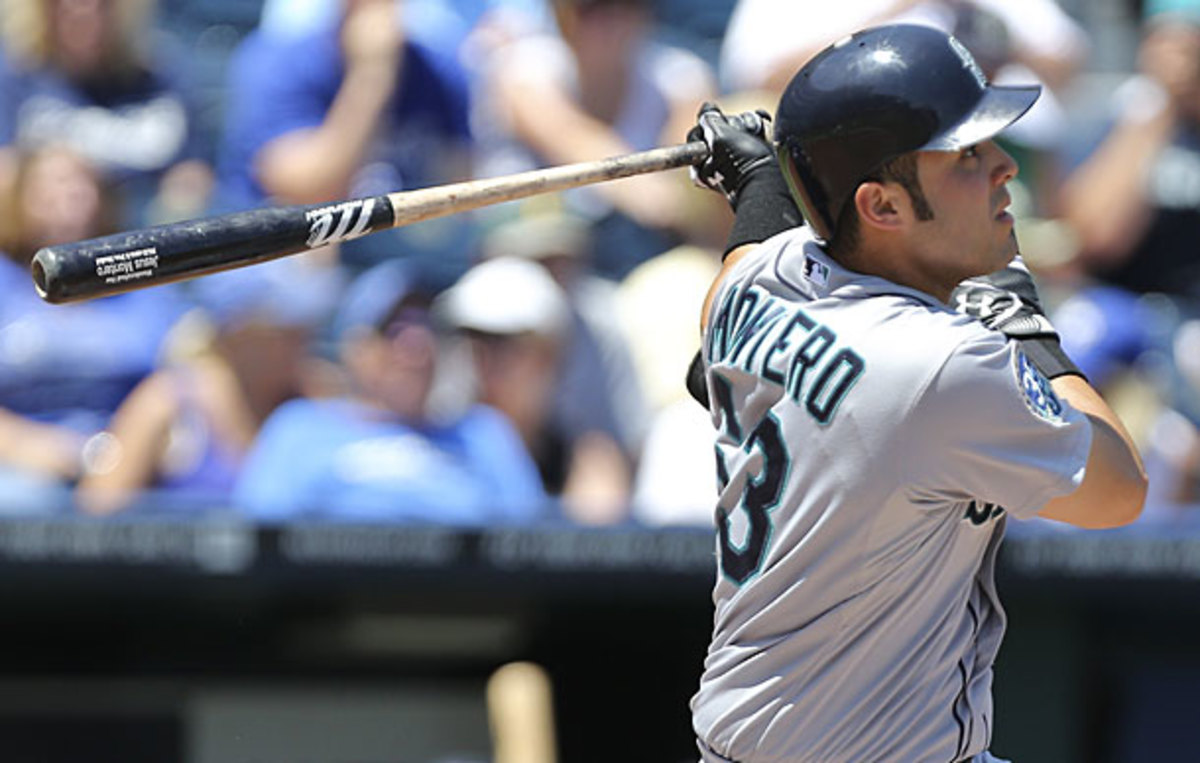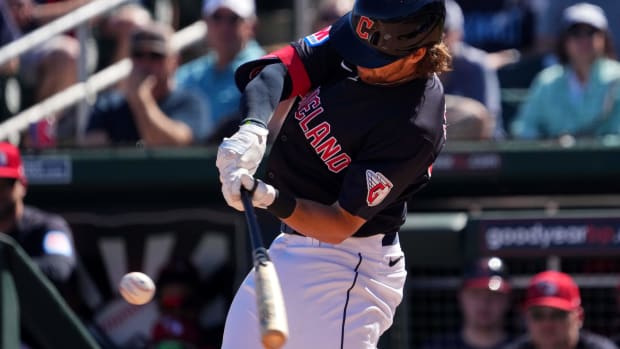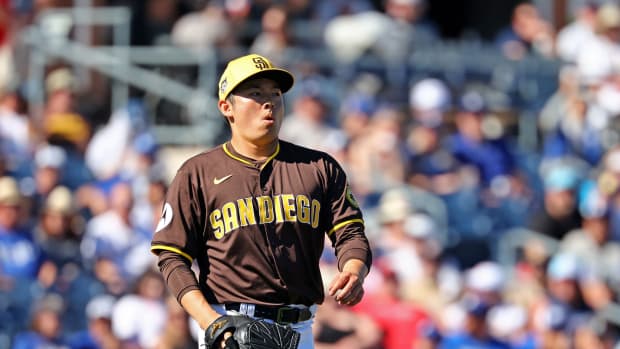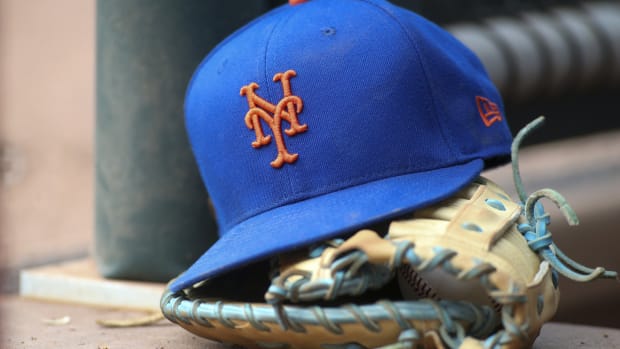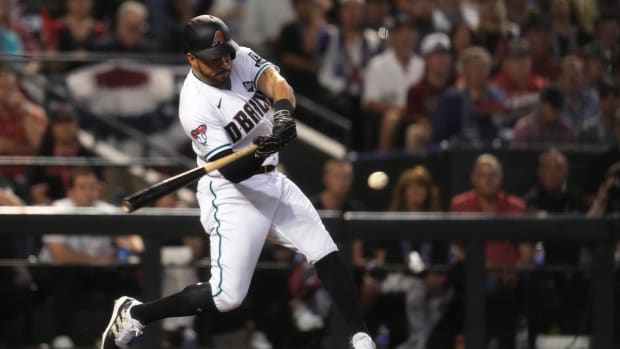Jesus Montero's career reaches a turning point with demotion to minors
Jesus Montero has not caught on in Seattle. (Jason Miller/Getty Images)
When the Yankees traded Jesus Montero to the Mariners in January 2012, they implicitly gave one of the game's top hitting prospects a vote of no-confidence regarding his potential as a catcher. Since being traded, Montero has struggled both behind the plate and at it, and the Mariners are ready to change course. On Thursday they plan to option him to Triple-A, the right move both for a player who has failed to live up to lofty expectations and for a team that has a growing collection of such (non)hitters.
At Tacoma, Montero will spend time at designated hitter while learning the ropes at first base, a position he has never played professionally. The move is as much to help restore his offensive prowess as it is to find alternative ways to fit him into the big club's lineup going forward.
Signed as a 16-year-old amateur out of Venezuela in 2006, Montero broke into the majors with the Yankees in September 2011, and hit .328/.406/.590 with four homers in 69 plate appearances. That impressive introduction, combined with glowing reports of his offense as a prospect — ranked in Baseball America's top six for three years in a row — cast him as the heir apparent to Jorge Posada and made it seem as though stardom was around the corner. Yet by the end of the 2011 season, the Yankees' confidence in his development as a receiver had eroded. Faced with a need for starting pitching, in January 2012 they sent Montero and swingman Hector Noesi to Seattle for Michael Pineda, who had just completed a strong rookie season, and pitching prospect Jose Campos.
To say that the deal hasn't worked out as planned for either side would be an understatement. On the Yankees side, Pineda suffered a torn labrum during the spring of 2012, and is currently in the process of rehabbing his way back to the majors. Campos was limited to 24 2/3 minor league innings before being sidelined by elbow problem. Meanwhile Noesi was torched for a 5.82 ERA and 1.8 homers per nine in 106 2/3 innings for the Mariners.
While Montero hit 15 home runs as a rookie, his overall .260/.298/.386 line was a disappointment, as was his -0.2 Wins Above Replacement. He was better away from Safeco Field (.295/.330/.438 with nine homers in 273 PA) than in it (.227/.268/.337), no surprise given the park's dampening effect on righthanded power. According to The Bill James Handbook, Safeco's three-year park factor of for righthanded home runs is an MLB-low 67, meaning that it reduces such homers by 33 percent. Over the winter, the Mariners addressed that somewhat by moving in the outfield fences, particularly in left-centerfield, but it hasn't helped Montero. His rate stats have declined across the board to .208/.264/.327 with three home runs in 110 PA and he has only one homer at home.
His catching has been worse. While starting 25 of the team's 47 games, Montero has allowed opposing base thieves to steal successfully 23 times in 24 attempts; his 4 percent caught stealing rate is down even from last year's 17 percent, the fourth-lowest mark of any AL catcher with at least 50 starts. In terms of pitch framing, his work has been among the league's worst, an estimated 11.7 runs below average through last week, according to Baseball Prospectus.
Montero hasn't been the only young Mariner who has failed to turn the corner this year. Neither first baseman Justin Smoak (.240/.355/.349) nor second baseman Dustin Ackley (.218/.277/.265) has lived up to their blue-chip prospect status either, and the team as a whole ranks last in the league at 3.60 runs scored per game. Even with the addition of the lowly Astros to the AL West, not to mention the shocking collapse of the Angels, the Mariners are now 20-27 with a -40 run differential, apparently bound for their fourth losing season in a row and eighth in 10 years.
With the 26-year-old Smoak failing to show much improvement after more than 1,500 major league plate appearances and 2012 first round pick Mike Zunino clearly the catcher of the future, it makes sense for the Mariners to start expanding Montero's options, though learning first base could be a challenge. According to the Tacoma News Tribune's Ryan Divish, his being sent down isn't a short-term move:
This isn’t likely to be a brief stint in Triple- A. Barring injury at the big league level, Montero will be there until figure things out offensively – it’s where his value is as a player. Much of the work will need to be with pitch recognition, understanding the strike zone and developing an approach that doesn’t have him swinging at anything and everything. At just 23 years old, there is time.
Defensively, he really is a man without a position. He can try and work at first base, but his lack of foot speed and athleticism will hinder him and it will be a challenge to be adequate at best. His true position may be DH and once or twice a week catcher.
Montero isn't going to see much time at catcher in Tacoma, because the 22-year-old Zunino is already doing regular duty there, and sometime later this summer could take over as Seattle's starting catcher, with Kelly Shoppach or light-hitting callup Jesus Sucre — yes, Sweet Jesus — serving as the backup. In addition to helping Montero find his stroke and adjust his approach, a long stay at Triple-A would allow the Mariners to slow down his service clock; instead of being arbitration-eligible after the 2014 season, they might forestall that until after 2015.






























